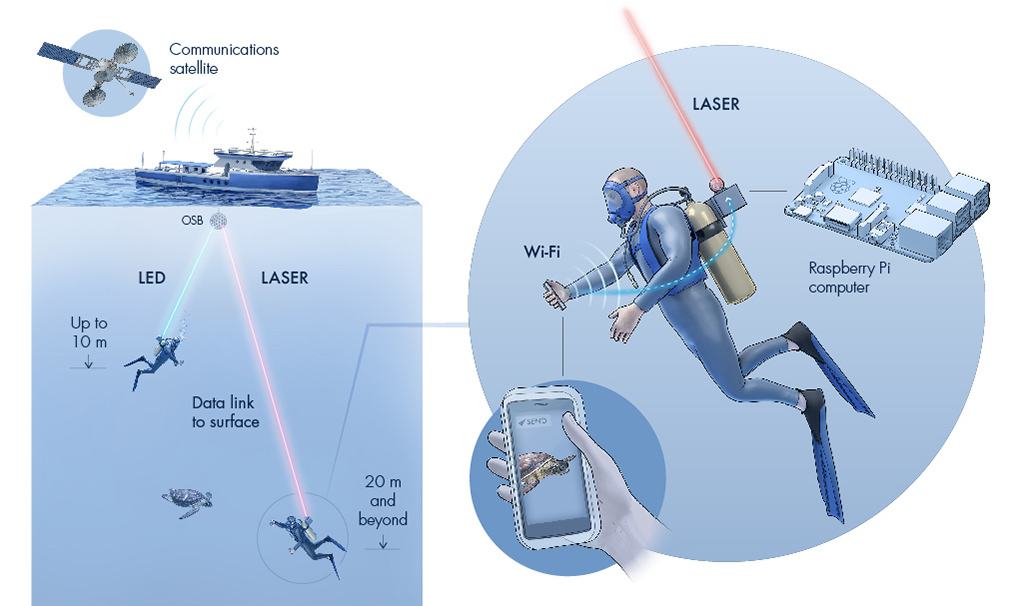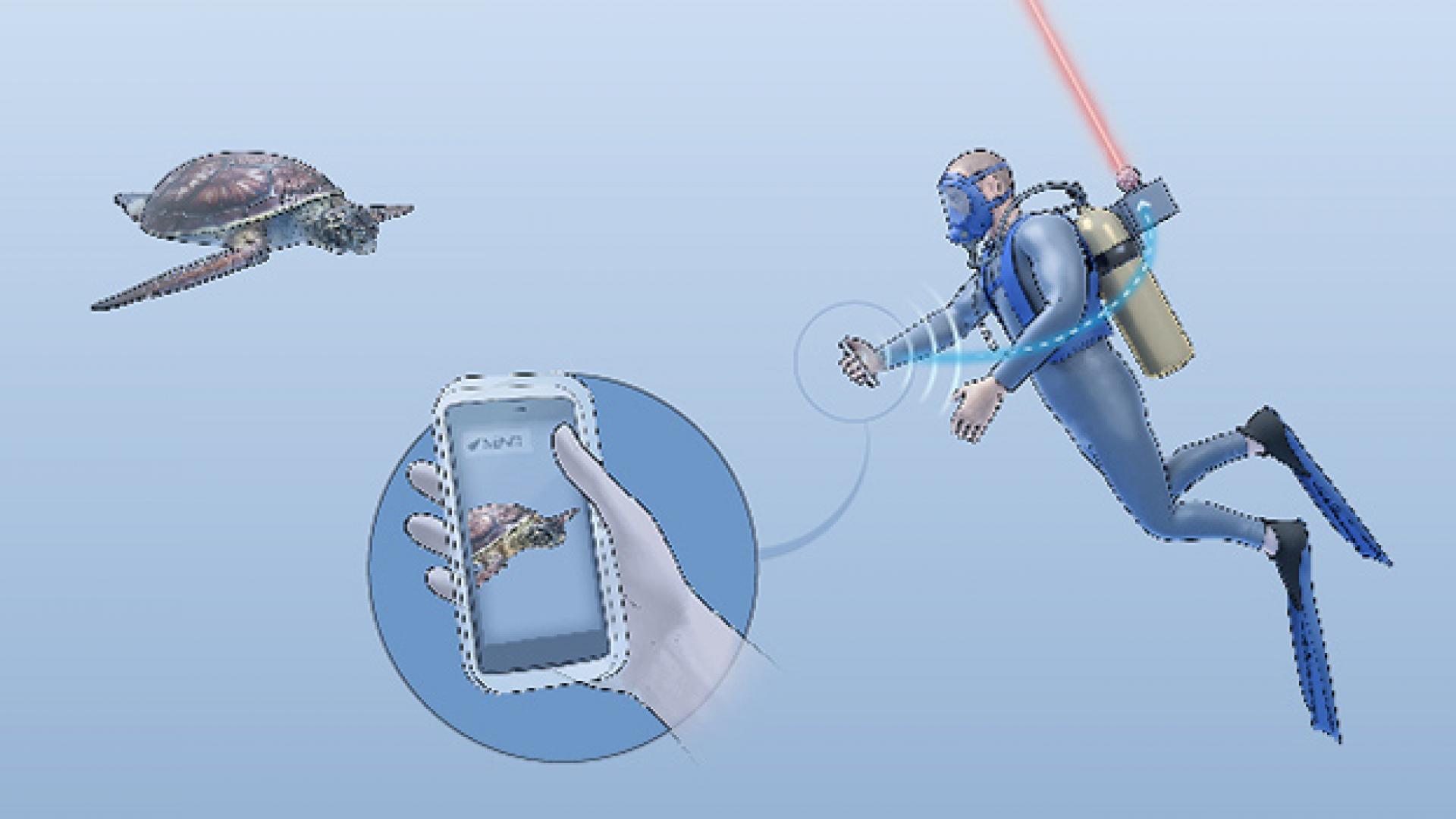© 2020 KAUST; Xavier Pita
Aquatic internet that sends data through light beams could enable divers to instantly transmit footage from under the sea to the surface.
The internet is an indispensable communication tool, connecting tens of billions of devices worldwide, and yet we struggle to connect to the web from under water. “People from both academia and industry want to monitor and explore underwater environments in detail,” explains the first author, Basem Shihada. Wireless internet under the sea would enable divers to talk without hand signals and send live data to the surface.
Underwater communication is possible with radio, acoustic and visible light signals. However, radio can only carry data over short distances, while acoustic signals support long distances, but with a very limited data rate. Visible light can travel far and carry lots of data, but the narrow light beams require a clear line of sight between the transmitters and receivers.
Now, Shihada’s team has built an underwater wireless system, Aqua-Fi, that supports internet services, such as sending multimedia messages using either LEDs or lasers. LEDs provide a low-energy option for short-distance communication, while lasers can carry data further, but need more power.
The Aqua-Fi prototype used green LEDs or a 520-nanometer laser to send data from a small, simple computer to a light detector connected to another computer. The first computer converts photos and videos into a series of 1s and 0s, which are translated into light beams turning on and off at very high speeds. The light detector senses this variation and turns it back into 1s and 0s, which the receiving computer converts back into the original footage.
The researchers tested the system by simultaneously uploading and downloading multimedia between two computers set a few meters apart in static water. They recorded a maximum data transfer speed of 2.11 megabytes per second and an average delay of 1.00 millisecond for a round trip. “This is the first time anyone has used the internet underwater completely wirelessly,” says Shihada.

In the real world, Aqua-Fi would use radio waves to send data from a diver’s smartphone to a "gateway" device attached to their gear. Then, much like a booster that extends the WiFi range of a household internet router, this gateway sends the data via a light beam to a computer at the surface that is connected to the internet via satellite.
Read the full article
Read TechRepublic article on this research project







